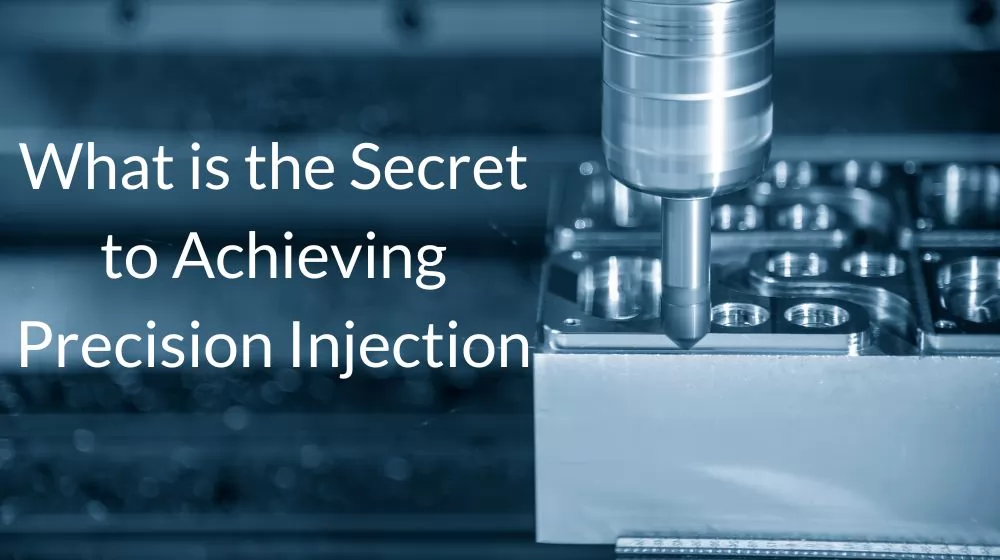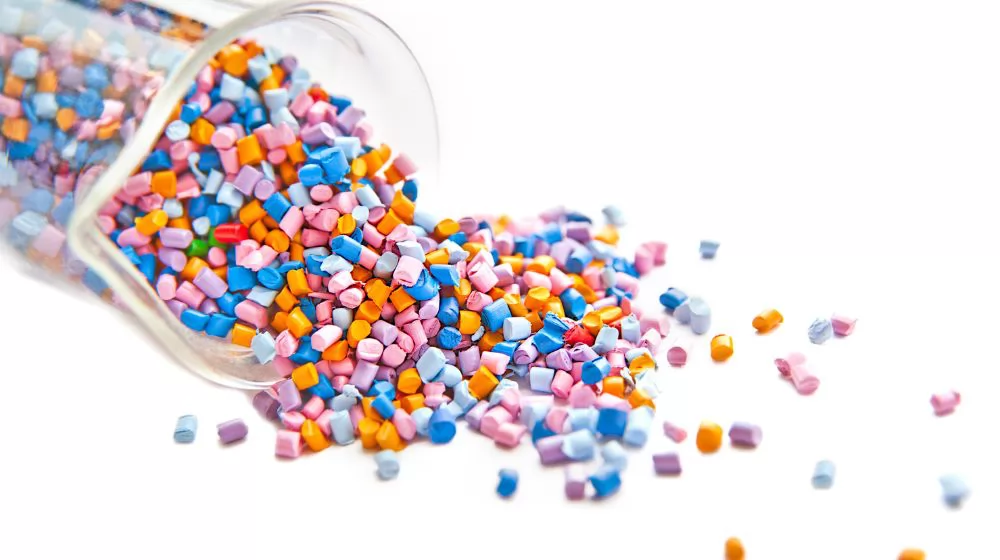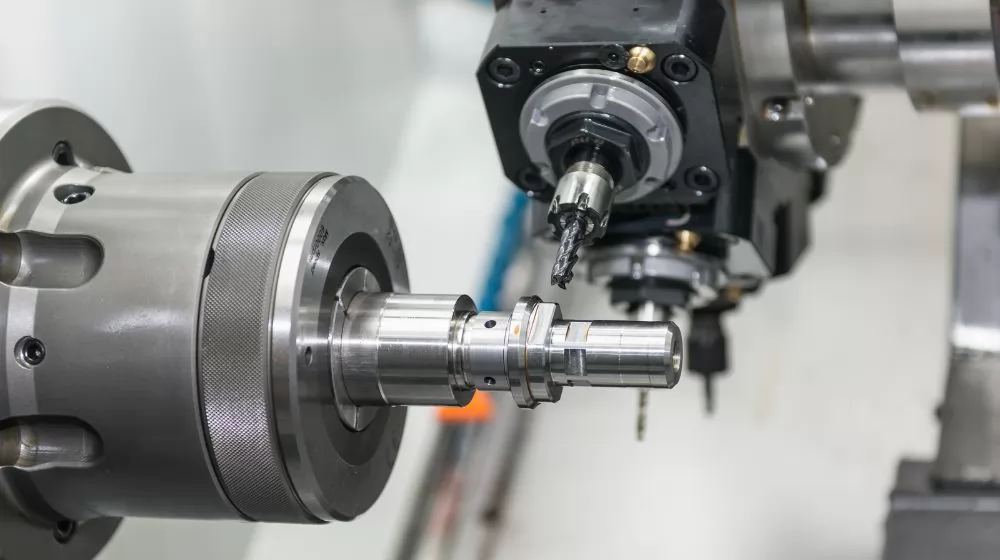
There are many forms of technology in today's world. These advances help make life easier by doing most of the work. Technological advances have created challenges for many inventors, and precision injection molding machines are at the forefront of these developments in the molding world. Some manufacturers are embracing the idea of incorporating these technologies into their operations, such as CNC and EDM machine tools, to give them an edge over their competitors. However, not many manufacturers achieve precise production. This article highlights the secrets to achieving precision injection. Read on.
What is Precision Injection Molding?
Precision injection molding is a type of injection molding that requires complex machines and techniques to achieve. This process only replaces metal parts for some parts that require high precision. These plastic parts are often complex and can only be achieved with precision machines and highly qualified operators. Furthermore, the process is quite costly compared to conventional injection molding processes.
It is not easy to meet the accuracy of all products, because the process requirements are very high. However, it is still possible to manufacture products with the highest precision using precision injection machines.
Injection Molded Plastic

Injection molding is a manufacturing method with a long history. American inventor John Hyatt and his brother Isaiah Hyatt invent the plastic injection machine to create billiard balls from plastic. It was an unusual endeavor, as everyone is used to balls made of ivory. The two brothers' attempt was successful and their outstanding machine was recognized. Since then, the plastic injection molding process has evolved to include modern machinery.
Injection molding is the manufacture of plastic by melting plastic pellets and injecting them into metal mold cavities. The process is done under high pressure to ensure that the plastic does not cure before it is properly installed in the cavity. The cavity determines the shape of the final product; therefore, a lot of work goes into its manufacture. Preferred thermoplastics for this process are polyethylene (high or low density), polyamide, polycarbonate, polypropylene, polystyrene, polyvinyl chloride, and the like.
In this process, the mold is a crucial tool. Be careful while making it as it is the basis of the whole process. Any defect in the mold will result in the loss of time, money and raw materials, because the product will also have defects. Injection molding plastic is generally a high-quality manufacturing process that is produced with high precision. However, for precision injection, the level of precision is of the highest standard. Since precision injection molding produces plastic parts that replace metal parts, the process needs to be first-class, while machining needs to be advanced to achieve it.
Precision Injection Molds and Parts
Typically, molds in any forming process are manufactured with the highest precision. In precision injection, it's no different; tooling is still considered the backbone of the business. Precision injection molds are molds for precision molding.
When constructing a mould, there are various factors to keep in mind;
Mold cavity: The mold cavity carries the secret to realize precision injection. Its size, precision of parting surface and correct placement of cavity will determine whether precision injection can be achieved. Mold cavities need to meet all the specific requirements from small details to obvious details.
Material selection: Selecting the appropriate mold material is another way to achieve precision injection. The mold material is preferably alloy steel; this is due to its impressive properties of strength, wear resistance, and corrosion resistance. In addition, steel alloys have the best temperature resistance.
Mold Thickness: Cavity walls, support and base plates, and other cavity components must adhere to the required thickness to improve accuracy.
Mold Design: Designing is not an easy task and requires the best design engineers to be responsible for creating the perfect precision injection mold.
The Mold has Some Parts that Facilitate its Function

Cleats: These use bolts to hold the two halves of the mold to the forming plate.
Nozzle (sprue sleeve): It is the passage for molten plastic to enter the mold cavity.
Feeding system: It is the process of liquid plastic entering the mold cavity from the injection machine. Plastic flows from the nozzle to the gate, and then the runner directs the liquid to the mold gate.
Cavity: The cavity is the space left when the two halves of the mold are joined. The cavity is where the molten plastic fills to form the product. Some molds have only a single cavity, while others have multiple cavities.
Cooling system: In order to form a part, the hot liquid needs to cool and solidify. A cooling system is installed around the mold to facilitate cooling. Water is used as coolant, but in the case of very high temperatures, oil is used.
Guide Pins: These pins ensure proper alignment when closing the mold.
Ejection system: consists of ejector pin and top plate. The pins push the formed part out of the mold, releasing it, and the plate is the surface on which the pins are mounted.
Precision Mold Testing and Engineering

Precision Mold Engineering
Mold engineering is the technology to ensure that molds are made and work properly. Mold making begins with the customer's idea of what they want. The client will describe their project to you or provide a sketch/sample of what they want. As a professional, it's your job to remember every specific detail of your client's request. Design is the first step to realize the client's dream.
Currently, there are several advanced technologies to aid in the design, such as prototyping, 3D machines, and high-precision CAD software to ensure that every detail is captured. Precision mold engineering uses advanced measures to determine whether a design can produce a viable mold. One such measure is mold flow analysis technology, which checks and analyzes feasibility and accuracy. In addition, they check whether the mold is compatible with the raw material.
After the above steps, production begins. At this stage, the molds are made by skilled mold makers who execute the designs flawlessly. CNC and EDM machines are always the first choice for making precision molds. These machines are reliable, durable, high-endurance and work fast. Finally, the parts are assembled to form the complete mold. Mold parts are manufactured individually, making it easier to polish each part for maximum efficiency.
Precision Mold Testing
Pre-shipment inspection of precision molds is an important measure.
Visual and Dimensional Inspection
• Check that each component is numbered
• There should be no sharp edges on the outside of the mold
• Die size meets customer's expectation.
• Check that all parts are installed properly
Evaluate Injection Systems
• You should correct any irregularly placed pins
• Check that the ejection system is working properly
• Check the return spring.
• Ejector plate should be able to return correctly
Check the cold runner system
• The shape and size of the cold runner system must meet customer specifications
• The inner surface of the nozzle should be polished
• Runners should also polish
Check the hot runner system
• Check for any exposed wires
• All connectors must be marked
• Wiring should conform to the design
After checking to make sure everything is in order, do a test run. Your customers need to be there to witness the quality of the mold and its effectiveness.
Precision Injection Molding Machine
Unlike conventional injection molding, precision injection molding uses advanced machinery such as CNC machines and EDM machines. Although the machine is similar to a normal machine, it has additional features that increase productivity by improving accuracy and minimizing errors. In addition, the working principle of the precision injection molding machine is the same as that of the ordinary injection molding machine. Since precision forming requires a high level of performance, it is best to have the machine operated by a professional with extensive precision forming experience.
The process of manufacturing plastic products using CNC machines is called polymer optics. It produces parts of very complex shapes with perfectly defined geometric lines. The precision forming process is run by a machine where measurements and all requirements are set and the machine system instructs the machine what to do. These advanced technologies allow for various customizations.
Advantages of Precision Injection Molding Machine
High precision: The precision injection molding machine adopts advanced control system and precise injection mechanism, which can realize precise size control and injection volume control, and ensure the dimensional stability and consistency of the product.
High stability: The precision injection molding machine is equipped with a stable temperature control system and pressure control system, which can maintain stable process parameters throughout the injection molding process and reduce product quality problems caused by process changes.
High Efficiency: The injection speed and cycle time of the precision injection molding machine can be precisely controlled, thereby improving production efficiency. At the same time, due to the application of the precision control system, the scrap rate is reduced and the production cost is reduced.
Versatility: Precision injection molding machines are suitable for various injection molding processes, including micro injection molding, multi-component injection molding, high-speed injection molding, etc., and have strong adaptability and flexibility.
Energy saving and environmental protection: the precision injection molding machine adopts advanced energy saving technology, such as frequency conversion drive, energy consumption monitoring, etc., which reduces energy consumption and environmental pollution.
High product quality: Due to the high precision and high stability of precision injection molding machines, the manufactured products are of better quality, with smooth surfaces and precise dimensions.
Process monitoring: The precision injection molding machine is equipped with an advanced monitoring system, which can monitor the temperature, pressure, flow and other parameters during the injection molding process in real time, and find problems in time and make adjustments.
High degree of automation: Many precision injection molding machines have automation functions, which can realize automatic feeding, automatic mold opening, automatic product removal, etc., reducing manual intervention and improving production efficiency and consistency.
Technical Challenges and Solutions for Precision Injection

As a high-precision manufacturing process, precision injection may face some technical challenges in practical applications. Here are some common challenges and their solutions:
Difficulties in micro-injection: In the production of some micro-parts, micro-injection is required, but the fluidity of micro-liquid is poor and it is easily affected by the outside world. Solution: Adopt advanced micro-injection equipment, adjust injection parameters, such as temperature, pressure, speed, etc., to ensure stable injection of micro-liquid.
Handling of high-viscosity materials: High-viscosity materials may cause flow difficulties during the injection process and affect injection quality. Solution: Reduce the viscosity by preheating the material, and adjust the design of the injection mechanism to meet the injection requirements of high-viscosity materials.
Temperature control during injection: Changes in temperature will affect the fluidity and curing speed of the material, thereby affecting product quality. Solution: Use a precise temperature control system to control the temperature of injection equipment and molds to ensure a stable temperature environment.
Injection pressure control: Instability of injection pressure can lead to problems such as inconsistent part dimensions, surface defects, etc. Solution: Adopt a closed-loop control system to monitor the injection pressure in real time, and automatically adjust it according to the demand to maintain a stable injection pressure.
Injection speed control: Different products may require different injection speeds, requiring precise control. Solution: Use an advanced control system to adjust the injection speed according to the requirements of the product to ensure the consistency of each injection cycle.
Challenges of multi-component injection: During multi-component injection, the mixing ratio and uniformity of different materials may be affected. Solution: Use professional multi-component injection equipment to ensure uniform mixing of different components and control the appropriate mixing ratio.
Material Selection and Compatibility: The properties and compatibility of different materials may affect the injection process and product performance. Solution: Carry out sufficient research and testing when selecting materials to ensure compatibility and stability between materials.
Assembly and mold matching: For precision injection products assembled with multiple parts, high matching accuracy of each part is required. Solution: Optimize mold design, perform precise mold assembly and adjustment, and ensure accurate fit of parts.
On the whole, precision injection can be overcome by means of advanced equipment, precise control system, reasonable process parameters and material selection when facing challenges. Technological innovation and continuous improvement are the key to solving these challenges to ensure the stability of the precision injection process and the improvement of product quality.
Conclusion
In conclusion, the secret to achieving production precision is to first invest in a quality precision machine line. From there, make sure your moldmaking skills are top notch, as molds can affect the final look of your product. In addition, the raw materials used should also be of high quality, whether it is plastic material or mold material. Also, be sure to evaluate and test your product before shipping.
Finally, choose the best precision injection molding manufacturer for cooperation, such as HingTung. We wholeheartedly serve you and meet your needs. Contact us to solve all your problems.


